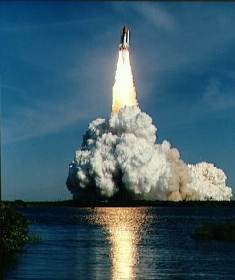Introduction to the Model
Description and Assumptions
This model is generally applicable (assuming knowledge of the external forces and system constituents). The model is especially useful when describing the momentum of systems where external forces are absent (system momentum will be constant) or estimating the force in a process that occurs in a very short time interval such as collisions (impulse will be easier to determine than force).
Learning Objectives
Students will be assumed to understand this model who can:
Relevant Definitions
\begin{large}\[ \vec{p} = m\vec{v}\]\end{large} |
S.I.M. Structure of the Model
Compatible Systems
The system must be effectively composed of point particles, though rigid bodies may be treated as point particles with positions specified by the center of mass positions of the rigid body when this model is used.
Relevant Interactions
Only external forces need be considered, since internal forces do not change the system's momentum.
Laws of Change
Mathematical Representation
Differential Form
\begin{large}\[ \frac{d\vec{p}}{dt} = \sum \vec{F}^{\rm ext}\]\end{large} |
|
Integral Form
\begin{large}\[ \vec{p}_{f} = \vec{p}_{i} + \sum \vec{J}^{\rm ext}_{fi} = \vec{p}_{i} + \int_{t_{i}}^{t_{f}} \sum \vec{F}^{\rm ext}\:dt \]
\end{large} |
|
|
Diagrammatic Representations
Relevant Examples
 Examples Involving Constant Momentum Examples Involving Constant Momentum
 Examples Involving Impulse Examples Involving Impulse
 Examples Involving 1-D Collisions Examples Involving 1-D Collisions
 Examples Involving 2-D Collisions Examples Involving 2-D Collisions
 Examples Involving Elastic Collisions Examples Involving Elastic Collisions
 Examples Involving Totally Inelastic Collisions Examples Involving Totally Inelastic Collisions
 Examples Involving Continuous Momentum Flux Examples Involving Continuous Momentum Flux
 All Examples Using this Model All Examples Using this Model

|  Examples Involving 1-D Collisions
Examples Involving 1-D Collisions Examples Involving 2-D Collisions
Examples Involving 2-D Collisions Examples Involving Elastic Collisions
Examples Involving Elastic Collisions Examples Involving Totally Inelastic Collisions
Examples Involving Totally Inelastic Collisions Examples Involving Continuous Momentum Flux
Examples Involving Continuous Momentum Flux All Examples Using this Model
All Examples Using this Model

